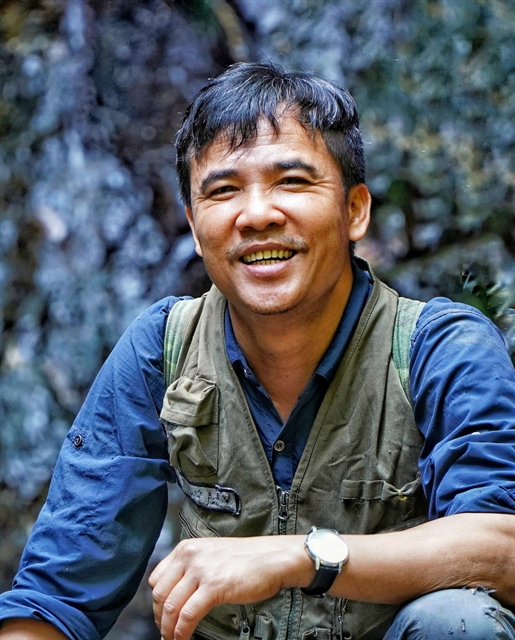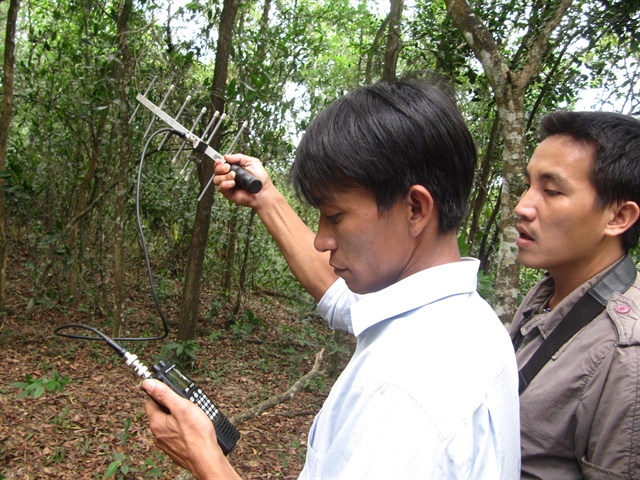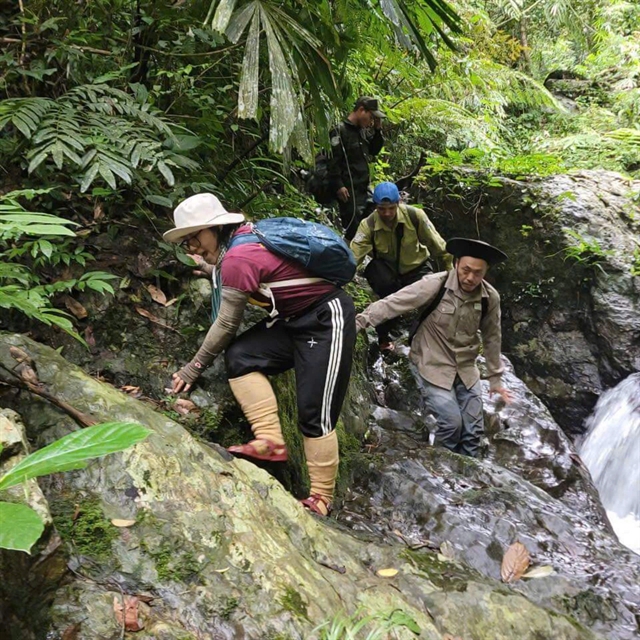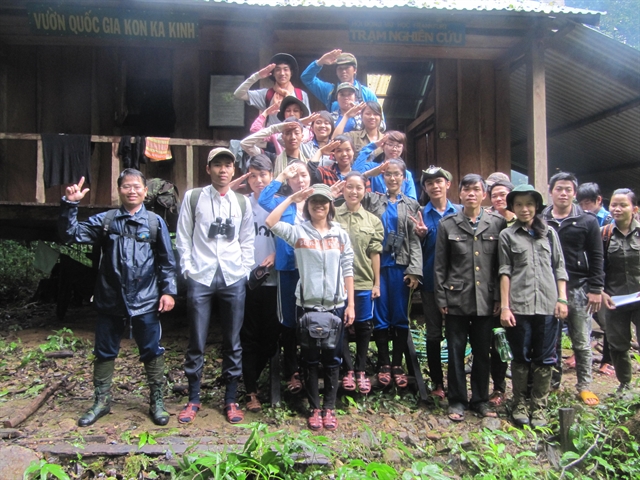Weather:
- Ha Noi 32oC
- Da Nang 30oC
- Ho Chi Minh 28oC

Biodiversity research and improving livelihoods for communities living near nature reserves and forests contribute to the protection of endangered species in Việt Nam. Zoologist Hoàng Quốc Huy, deputy director of the Centre of Biodiversity Conservation (GreenViet), speaks with Việt Nam News reporter Công Thành about the importance of rich biodiversity conservation.
How are protection activities and biodiversity conservation at Saola reserves conducted in Central Việt Nam?
Camera trap network building has been seen as an effective solution in examination of various endangered species, including the critically endangered species saola (Pseudoryx nghetinhensis) or Asian bicorn, one of the most wanted in different reserves in central Việt Nam.
Some of the specific reserves were established in former Quảng Nam and Thừa Thiên Huế provinces with the unique assigned mission of researching the saola species.
We set up more than 200 camera trap sites in jungles to track the possible appearance of the so-called Asian bicorn in Quảng Nam Sao La Reserve in 2022-23. Although an image of a Sao La has yet to be snapped, we have witnessed the increase in other endangered species including Annamite striped rabbit, chamois, muntjac and wild boar. It resulted from good management of primary forest in the reserve, as well as improving the quality of jungle treks.
Meanwhile, local community awareness on wildlife protection and the law of environment and biodiversity have been improved through regular education and communication programmes by rangers at the reserve.

A series of community-supported livelihood improvement programmes have been implemented by local authorities, conservation organisations and residents living in the buffer zone of the strictly-protected forest.
Local ethnic minority villagers have been guided on how to increase incomes from forest canopy farming and medicinal herb plantation. Now, cases of forest poaching occur less and less in the reserve.
What can you tell us about biodiversity supervision programmes at nature reserves?
Habitats and landscapes for different endangered species were well protected by supplying abundant food sources for wildlife species in the reserves. Some damaged and downgraded habitats of endangered species were restored to provide protected areas for species to live and reproduce.
Meanwhile, investment in science research and technology has been improved to provide equipment for better supervision and data building during jungle patrols.
The deeper participation of NGOs and strong commitments from local nature reserve management boards have paved out long-term conservation and protection of biodiversity and scientific research.
For example, the World Wide Fund for Nature has committed to cooperate with local authorities and reserve management boards in boosting biodiversity conservation and endangered species protection.
Do you have any proposals for future biodiversity conservation undertakings?
It really needs technical and scientific support and training programmes for local rangers and staff of reserve management boards. Conservation programmes should be prioritised for various endangered species, and assigned specific research is needed for some wildlife species that are facing extinction.
A database on all species should be built for long-term conservation targets. Currently, management boards of nature reserves are required for camera trap solutions and technical consultancy from top experts and conservationists.
We also need reviews on resources allocated to programmes, as 80 per cent of funds and investment is reserved for endangered species conservation, while the remainder is used for local community livelihood improvement and wildlife habitat protection.

Recently, improving living standards and incomes for communities living in buffer zones and near reserves has become a key factor for sustainable biodiversity conservation and wildlife species protection. This is because 80 per cent of human activities badly impact forest quality and endangered species.
Poverty and lack of food will lead local communities to over-exploit forestry products, and of course illegal hunting and logging for money. This means the natural habitat of wildlife species will soon be destroyed by such activities.
Funding and commitments from international NGOs are often only implemented during periods of conservation projects, while management boards of nature reserves need regular funding and facilities for conservation activities as well as database resolutions.
Technical training courses and conservation education are needed for personnel working effectively at nature reserves. Technology transfer is also required for the long-term target of biodiversity conservation.
How effective can conservation projects and community support initiatives become?

Supportive programmes for improving living standards among communities will include local practical farming methods, customs, and lifestyle.
Collecting local community opinions is needed before beginning a conservation project in localities, as they promote value and feasibility for long-standing sustainable targets. Project managers should ask communities what support they need from conservation programmes, as well as giving them a hand in building marketable farming and high-value organic agriculture.
Assessments have been given in valuating the effectiveness of community-based supportive projects related to wildlife protection and biodiversity conservation at natural reserves. VNS
